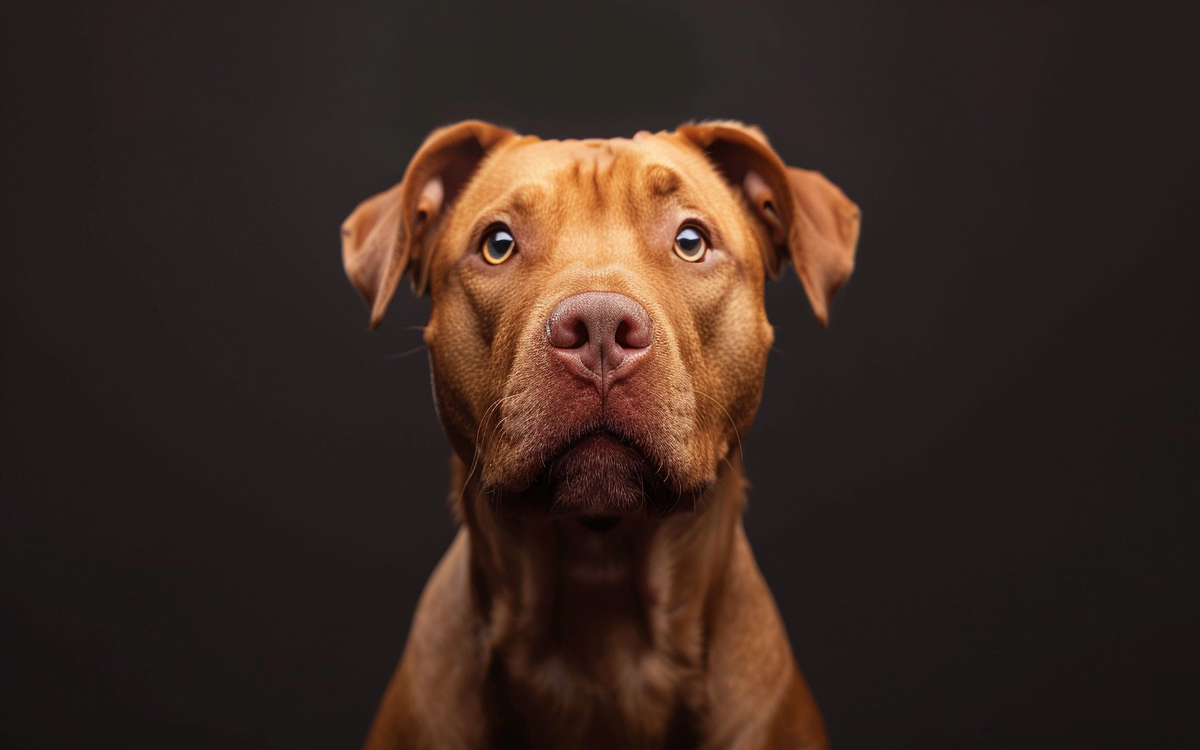Red Nose Pitbulls are one of two major color variations in the American Pitbull Terrier breed. Red Nose Pitbulls have a more earthy red or brown coat, with a warm pink or red nose. The Blue Nose has a cooler, blueish coat, but both have the same loving, energetic, and affectionate personality.
Sadly, the Red Nose has gotten a bad reputation among some circles as being aggressive. Some places prohibit owning them altogether—more than 80 cities in Ohio, for example.
Introduction
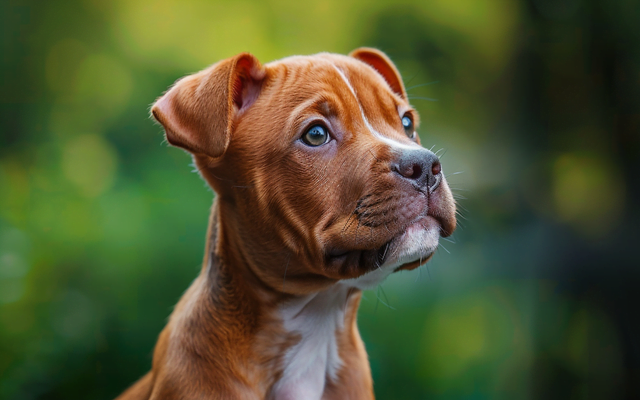
Think those “puppy dog eyes” are irresistible? Wait until you meet a Red Nose Pitbull! They sport the cutest cinnamon-colored noses and amber eyes that’ll instantly melt your heart. But don’t be fooled by that adorable face – the Red Nose Pittie is often full of surprises. These pups are strong, playful, and incredibly loyal to their humans.
Sadly, there’s also a lot of misunderstanding surrounding this breed. So, let’s set the record straight and debunk those pesky myths. In this article, we’ll dive into what makes the Red Nose Pitbull such a special dog, from their fascinating history to tips for responsible ownership. Get ready to learn all about the pup with the nose that glows!
The Allure of the Red Nose: Unpacking the Coloration
Let’s talk about that famous nose! Red Nose Pitbulls get their name from their distinctive reddish-pink nose, which can range from a bright coppery red to a more subdued liver color. But did you know that red noses aren’t actually that rare? They’re just one type of coloration within the American Pit Bull Terrier breed.
Here’s a little science lesson: the color of a dog’s coat and nose comes down to their genetics. Imagine tiny packets of information called genes that control things like fur and skin color. In the case of Red Nose Pitbulls, they have a specific set of genes that produce less melanin, which is the pigment that gives skin and fur its color. Less melanin means a lighter, reddish nose and often a coat that’s also on the warmer, reddish side of the spectrum.
Back in the day, Red Nose Pitbulls were specifically bred by Old Family Red Nose (OFRN) kennel clubs in Ireland for their unique coloring. These pups were a bit of a status symbol, and their reddish noses were considered a sign of gameness and pure bloodlines.
Although Red Nose Pitbulls share the same core breed heritage with American Pit Bull Terriers with different nose colors, there are anecdotal claims about subtle differences in temperament and potential health concerns. However, it’s important to remember that these claims are often not supported by scientific evidence, and individual dog personality varies greatly.
Beyond the Coat: The Red Nose Pitbull’s True Character
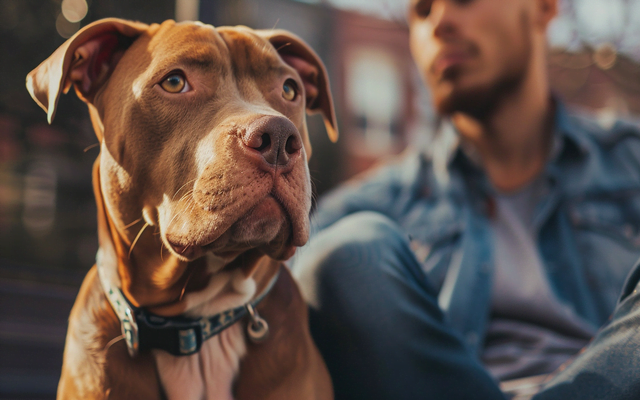
Let’s move beyond the adorable snoot and discover the amazing personality traits that make Red Nose Pitbulls so special. While many people might associate this breed with aggression, this couldn’t be further from the truth! Responsible owners and breeders describe Red Nose Pitties as remarkably intelligent, playful, and eager to please their humans. Sound familiar? That’s because they share many of the same characteristics as all American Pit Bull Terriers.
Like all dogs, a Red Nose Pitbull’s personality is shaped by its genetics, upbringing, and training. A well-bred and well-socialized Red Nose Pittie can be an absolute lovebug, always ready for cuddles and playtime.
Did you know that many Red Nose Pitbulls have served as heroic working dogs or loving therapy animals? Their strong work ethic and friendly nature shine in different settings. We’ll delve into these amazing working pups later in the article.
It’s important to address the elephant in the room. Unfortunately, some cruel people have misused this powerful breed in activities like dog fighting and for the sake of intimidation. This gives all “pit bull-type” dogs, including the sweet Red Nose, an unfair reputation. Responsible dog ownership and advocacy are key to changing this harmful stereotype.
Raising a Champion: Training and Socialization
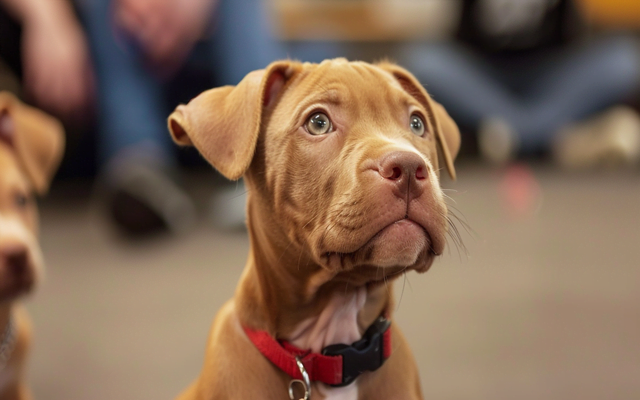
Like any dog, a Red Nose Pitbull needs proper training and socialization to become a well-adjusted furry family member. Here’s the good news: these pups are super smart and love to learn, which makes training easier! Here’s what you need to focus on:
- Start ’em young: The earlier you start socializing your Red Nose Pitbull puppy with other dogs, people, and different environments, the better. This creates positive experiences and helps them become a confident adult dog.
- Positive reinforcement is key: Red Nose Pitbulls thrive with reward-based training. Use treats, praise, and lots of enthusiasm to teach them basic commands and good manners. This creates a positive bond between you and your pup.
- Managing Prey Drive: Like many terriers, Red Nose Pitties can have a strong prey drive (the instinct to chase). Channeling this energy into positive activities like fetch, flirt poles, or structured walks is important to avoid problems and keep them happily focused on you.
- Finding Help: Don’t be afraid to seek guidance from experienced dog trainers. They can offer valuable insights and help you address specific challenges.
Lifelong Wellness: Health Considerations and Care
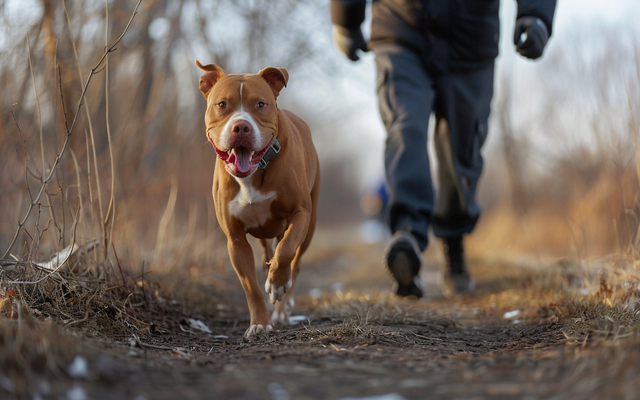
Keeping your Red Nose Pitbull happy and healthy is a huge part of responsible ownership. Like any dog, they have some breed-specific health concerns to be aware of.
Here’s what you need to know:
- Hip and Elbow Dysplasia: This joint condition is common in larger breeds, including Pit Bulls. It’s important to choose a breeder who screens for these issues to minimize risk.
- Allergies: Red Nose Pitbulls, like all pittie types, can be prone to skin allergies. Look out for excessive scratching, hot spots, or hair loss.
- Hypothyroidism: Some Red Nose Pitbulls may develop an underactive thyroid, which affects metabolism. Symptoms can include weight gain and lethargy.
These are just some potential health issues. Always work closely with your veterinarian for regular checkups, preventative care, and managing any concerns that might arise. A healthy, happy Red Nose Pitbull has an average lifespan of 12-14 years, so you’ve got many years of cuddles and adventures ahead!
Finding Your Perfect Match: Choosing a Red Nose Pitbull Breeder
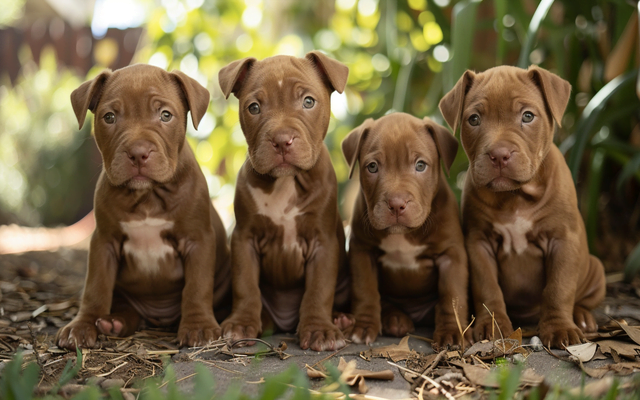
Bringing a Red Nose Pitbull into your life is a wonderful decision, but it’s vital to find a responsible breeder committed to preserving the breed’s health and temperament. Sadly, the popularity of “red noses” has led to some irresponsible breeding practices. So, how do you separate the good from the bad?
Red flags to look out for:
- Puppy mills: Breeders who churn out puppies without regard for health or socialization.
- Online sales and impulse buying: Avoid buying a puppy based solely on a photo or availability
- Lack of health testing: Reputable breeders screen their dogs for common breed problems.
What to look for:
- Knowledge and passion: They should be able to answer all your questions about the breed, their breeding practices, and the specific puppy’s lineage.
- Meet the parents: If possible, observing the puppy’s parents gives insight into how your pup might develop.
- Good socialization: Puppies should be exposed to different environments and handled frequently from a young age.
Beyond the Leash: A Look into the Working World of Red Nose Pitbulls
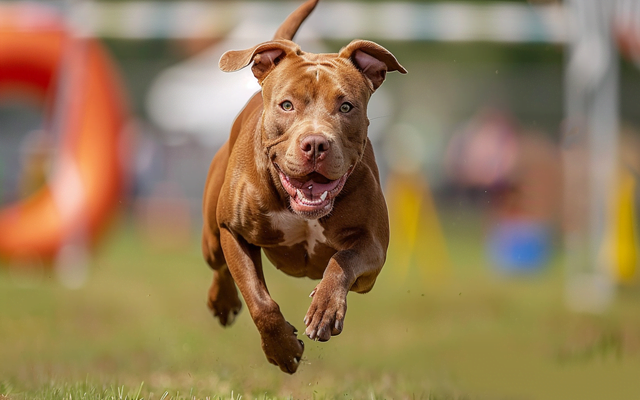
Did you know that Red Nose Pitbulls, like their Pit Bull Terrier cousins, have a rich history as working dogs? While originally bred for unfortunate purposes like bull-baiting, this breed’s intelligence, athleticism, and drive make them excel in various roles today. Let’s explore some modern-day job opportunities for a Red Nose Pittie:
- Scent Detection: With their powerful noses and eagerness to please, Red Nose Pitbulls can be trained for search and rescue operations, narcotics detection, or even tracking lost pets.
- Athletic Pursuits: This breed loves a challenge! They make great partners for dog sports like agility, dock diving, flyball, or weight pulling (in safe and controlled environments). These activities provide mental and physical stimulation and strengthen the bond with their owner.
- Therapy Dogs: A well-trained and socialized Red Nose Pitbull with a gentle nature can bring lots of love and comfort as a therapy dog in hospitals, nursing homes, or school programs. This highlights their incredible adaptability!
Historically, the Red Nose strain was often favored for working purposes due to their lineage’s reputation for gameness. While temperament is always an individual factor, this could provide an interesting historical footnote in this section.
It’s important to match your Red Nose Pitbull with activities suitable for their individual drive and temperament. Not all dogs will enjoy the same type of work.
Is a Red Nose Pitbull Right For You?
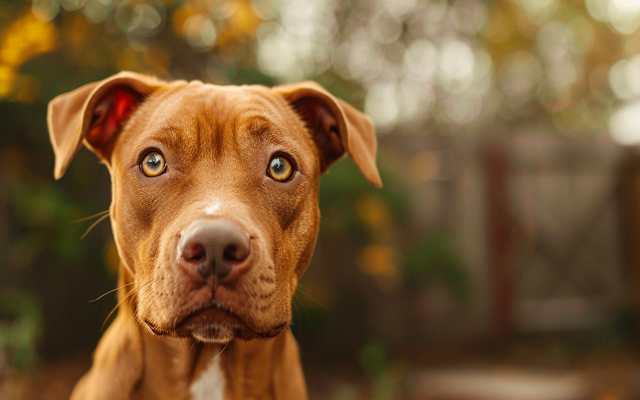
This is the most important question to ask yourself before bringing home any dog, but especially with a breed that sometimes comes with misconceptions. Red Nose Pitbulls are amazing companions, but they’re definitely not for everyone.
Here’s an honest checklist:
- Can you commit to consistent exercise and mental stimulation? Red Nose Pitbulls are high-energy dogs and need plenty of walks, playtime, and training sessions to avoid boredom and destructive behaviors.
- Are you prepared for potential breed-specific challenges? Red Nose Pitbulls (like most terriers) may have a strong prey drive or need additional guidance with socialization around some other dogs.
- Are there breed restrictions in your area? Sadly, some cities or housing communities have unfair breed-specific legislation. Research local ordinances before your heart gets set on a Red Nose Pittie.
If you can confidently answer “yes!” to the points above, and you’re ready to provide a loving, responsible home, then a Red Nose Pitbull might just be your perfect furry soulmate.
Conclusion
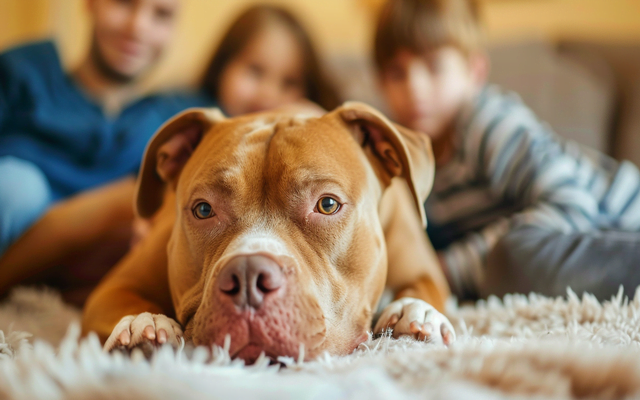
We’ve covered a lot of ground, from those adorable red noses to the hearts beneath them. The Red Nose Pitbull is truly a unique and special breed. However, their history (shaped by human failings) and inherent power mean this dog is simply not a great fit for everyone.
If you’re the kind of person who loves an enthusiastic canine companion, enjoys providing mental and physical stimulation, and is committed to training and socialization, a Red Nose Pitbull could fill your life with joy and adventure.
Remember, responsible ownership is everything. By choosing a reputable breeder, addressing their specific needs, and becoming a breed ambassador, you’ll help challenge stereotypes and give these beautiful dogs the happy lives they deserve.
If you’re still on the fence, consider visiting a local breed club or rescue organization to meet Red Nose Pitbulls in person and speak to knowledgeable enthusiasts. Who knows, you might just find your new best friend with a very special nose!
FAQs
Are Red Nose Pitbulls a separate breed from other American Pit Bull Terriers?
No, Red Nose Pitbulls are not a separate breed. They are a color variation within the American Pit Bull Terrier breed. Their distinctive red noses and often reddish coats result from selective breeding for those specific traits, especially from the Old Family Red Nose (OFRN) lineage.
Do Red Nose Pitbulls make good family dogs?
Red Nose Pitbulls can make amazing family dogs, but it heavily depends on responsible ownership, training, and socialization. They have loving, loyal personalities and love to be part of a family. However, like any large, powerful dog, they require consistent training from puppyhood and need experienced owners who understand their potential needs and challenges.
Were Red Nose Pitbulls specifically bred for fighting?
Historically, some irresponsible breeders and owners exploited Red Nose Pitbulls and other terrier breeds for fighting purposes. However, this practice is deeply unethical and illegal. Today, responsible breeders focus on preserving the breed’s positive traits, athleticism, and good temperament for companionship and suitable working roles.
Can Red Nose Pitbulls have blue eyes?
Yes! While amber eyes are the most common color seen alongside the red nose, it’s possible for Red Nose Pitbulls to have blue eyes as well. This adds to their unique and striking appearance.
How can I help advocate for responsible Red Nose Pitbull ownership and fight against breed stereotypes?
Here’s how you can make a difference:
- Be a responsible owner: Properly training, socializing, and being a role model showcases the loving side of the breed.
- Support responsible breeders and rescues: Choose ethical sources for your dog and support shelters advocating for the breed.
- Educate others: Share positive information about Red Nose Pitbulls and challenge misconceptions with facts.

I could talk about dog breeds all day! My goal is to help you find the four-legged friend who fits your life like a perfectly worn-in tennis ball fits in a dog’s mouth.

